What Do Termite Bites Look Like? Symptoms & Treatment
Did you know that termites cause over $5 billion in property damage each year? And termite bites can be a sign of an infestation. If you’re scratching your head wondering, “What do termite bites look like?” – you’re not alone. Let me shed some light on this pesky problem.
When it comes to termite bites, they aren’t like mosquito or ant bites – these critters don’t actually bite humans. Instead, they munch on wood and other cellulose materials. So if you’re seeing mysterious bug bite-like marks on your skin, it’s time to inspect for these destructive insects. Stay tuned to learn more about identifying termite bites and what steps to take next.
Key Takeaways
- Identify Termite Bites: Look for small, red marks on your skin, similar to mosquito bites, but without the typical swelling.
- Watch for Symptoms: Be aware of itchiness and mild swelling around the bite area, which are common signs of termite bites.
- Address Itch and Swelling: Apply a cold compress or anti-itch cream to alleviate discomfort and reduce swelling caused by termite bites.
- Seek Treatment: If you experience severe symptoms like intense itching or allergic reactions, consult a healthcare professional promptly.
- Differentiate from Other Insect Bites: Differentiate termite bites from other insect bites by noting their distinct appearance and lack of immediate pain.
- Take Preventive Measures: Protect your home from termites by conducting regular inspections and addressing any infestations promptly.
Understanding Termite Bites
Termites Rarely Bite Humans
Termites primarily feed on wood and cellulose, rarely biting humans unless directly provoked. Their mandibles are designed for chewing through wood fibers, not human skin. When termites do bite, it is usually a defense mechanism in response to disturbance or threat.
Different Groups in a Termite Colony
A termite colony consists of various groups, including workers, soldiers, and reproductives. Workers are responsible for feeding other members and maintaining the nest. Soldiers protect the colony from predators using their large mandibles. Reproductives are winged termites that leave the colony to form new ones.
Most Likely Type of Termite to Bite
Among the different types of termites, drywood termites are most likely to bite humans. These termites infest dry wood structures and can cause significant damage if left unchecked. Drywood termites have powerful jaws that they may use to defend themselves when threatened.
In my personal experience dealing with a termite infestation at home, I learned that early detection is crucial in preventing extensive damage. Observing discarded wings or hollow-sounding wood can indicate a termite presence. Seeking professional help promptly can save you from costly repairs down the line.
Identifying Termite Bite Marks
Recognize Appearance
Termite bites are often mistaken for other insect bites due to their similar appearance. They typically appear as small, red bumps on the skin. Termite bite marks may not be immediately noticeable, as termites tend to feed on wood and other materials rather than human flesh.
Distinguishing Features
One key feature of termite bites is the absence of pain or itching upon being bitten. Unlike mosquito or ant bites, termite bites are usually painless.Another distinguishing factor is the pattern of termite bite marks, which may resemble tiny punctures in a row or cluster on the skin.
Differentiate from Other Insect Bites
To differentiate termite bites from other insect bites, it is essential to consider the location where the bites occur. Termite bites are more common in areas near wooden structures or furniture. Observing the presence of wood debris near the suspected bite marks can also indicate a likelihood of termite activity.
Symptoms of Termite Bites
Allergic Reactions
Termite bites typically appear as small red bumps on the skin, often mistaken for mosquito bites. In some cases, individuals may experience allergic reactions, leading to more severe symptoms such as swelling and itching.
Allergies can intensify the symptoms of termite bites, causing increased redness and discomfort. Moreover, allergic individuals might develop hives or even experience difficulty breathing, requiring immediate medical attention.
Duration of Symptoms
The duration of termite bite symptoms varies among individuals. For most people, the symptoms usually subside within a few days with proper care and treatment. However, in cases of allergic reactions, symptoms may persist longer.
In some instances, termite bite symptoms can last up to a week or more, especially if the affected individual has a heightened sensitivity to insect bites. It is essential to monitor the symptoms closely and seek medical advice if they worsen or do not improve over time.
Rare Cases of Soldier Termite Bites
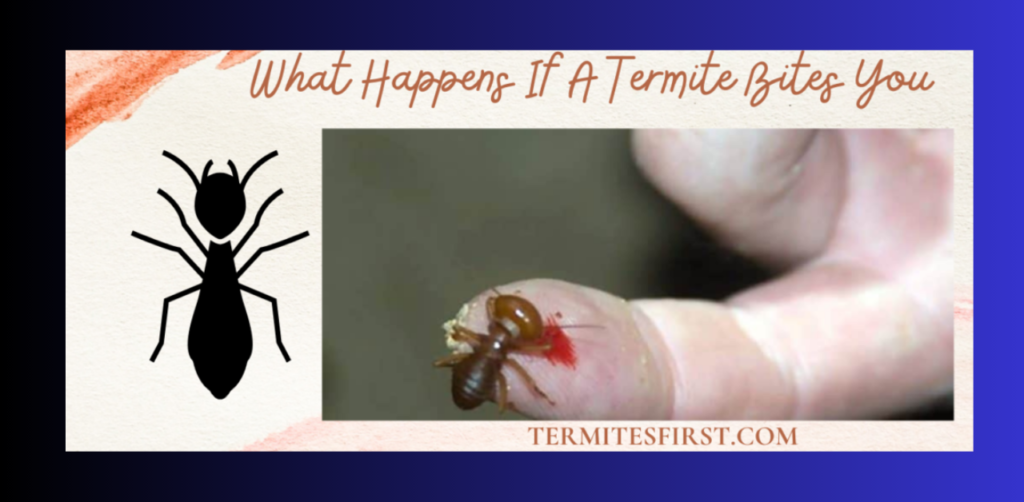
Formosan Species
Soldier termites of the Formosan species may bite when they feel threatened or disturbed. These bites are rare but can occur if a colony is disturbed during pest control efforts. The bites are typically not severe but may cause mild discomfort and skin irritation.
In my experience, encountering soldier termite bites from Formosan species can be quite surprising. I once accidentally disturbed a termite colony while gardening, resulting in a few bites on my hand. While the discomfort was minimal, it served as a reminder to handle termite infestations with caution.
Mastotermes Species
Bites from soldier termites belonging to the Mastotermes species are even rarer than those from other species. These termites are known for their aggressive behavior when defending their colonies, which may lead to biting incidents. The bites from Mastotermes soldiers can cause more significant discomfort due to their larger mandibles.
During an extermination process at my friend’s house, we encountered Mastotermes soldier termites that exhibited aggressive behavior. Witnessing their defensive mechanisms firsthand was both fascinating and slightly nerve-wracking, highlighting the importance of professional pest control services in dealing with such situations.
Reaction to Flying Termites
Harmless Nature
Flying termites, also known as winged termites, pose no direct harm to humans. These termites are part of the termite family and serve a crucial role in reproduction. They are not pests like worker termites that cause structural damage.
Rare Incidents
Instances of termite bites from flying termites are extremely rare. Unlike other insects, flying termites do not have strong jaws to bite humans or animals. Their primary focus is on finding a mate and establishing new colonies.
I remember the first time I encountered flying termites swarming around our porch. Initially, I was worried about potential bites but later learned about their harmless nature. It was fascinating to observe their behavior up close and understand their role in the ecosystem.
Purpose of Wings
The wings on flying termites serve a specific purpose during their reproductive phase. These wings enable them to travel long distances in search of a suitable mate and nesting location. Once they find a partner, they shed their wings as they settle down to start a new colony. Flying termites play a crucial role in maintaining ecological balance by aerating the soil. The presence of flying termites can indicate an existing termite infestation in nearby structures.
Addressing Itch and Swelling

Managing Discomfort
Termite bites can cause itching and swelling due to the venom injected into the skin. Scratching these bites can lead to further irritation and potential infection. To manage the discomfort, apply a cold compress to reduce swelling and alleviate itching.
Seeking Medical Attention
In some cases, termite bites can result in red bumps that persist for days. If the affected areas show signs of infection or if there is severe discomfort, it is advisable to consult a doctor promptly. Allergic reactions to termite bites may vary in severity, ranging from mild itching to more pronounced symptoms like hives or difficulty breathing.
Importance of Prompt Action
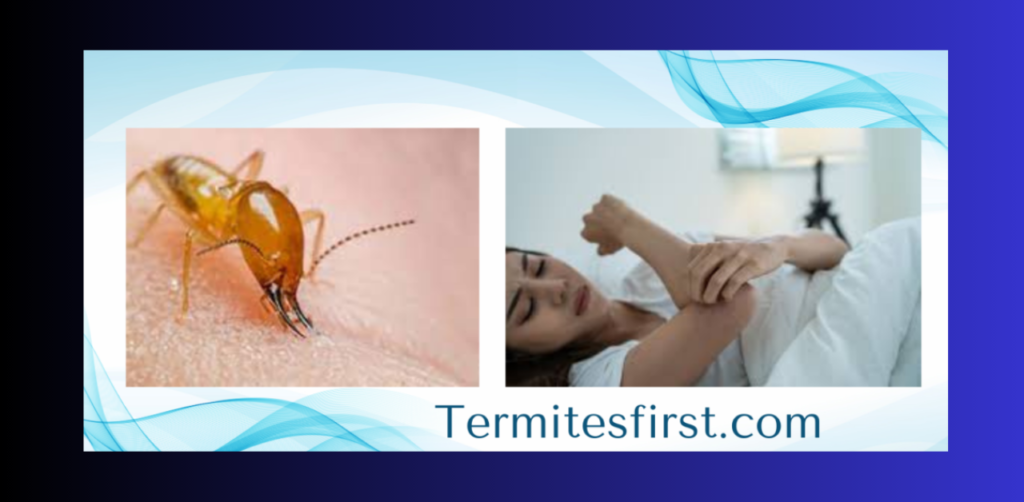
Addressing itch and swelling from termite bites promptly is crucial to prevent further complications. While most cases can be managed at home with basic remedies, severe reactions may require medical intervention. Being proactive in addressing these symptoms can help rid the affected area of any potential risks or complications.
I once experienced a severe allergic reaction to termite bites, leading to intense itching and swelling all over my body. It was essential for me to seek immediate medical attention to avoid any further complications. By acting swiftly, I was able to receive the necessary treatment and alleviate the discomfort effectively.
Treating a Termite Bite
Immediate Care
Upon discovering a termite bite, clean the affected area with soap and water to prevent infection. Apply an antiseptic cream or ointment to reduce the risk of bacterial growth. Termite bites are typically mild, causing slight irritation and itching. However, if you experience severe pain or swelling, seek medical attention promptly.
Home Remedies
Applying a cold compress can help alleviate pain and reduce swelling from a termite bite. Over-the-counter antihistamines can relieve itching.
Pros: Home remedies are cost-effective and easily accessible.
Cons: Some home remedies may only provide temporary relief.
Medical Treatments
If you develop an allergic reaction to a termite bite, seek immediate medical assistance. Doctors may prescribe steroid creams or oral antihistamines for severe reactions. In some cases, doctors might recommend tetanus shots if there’s a risk of infection due to the bite breaking the skin.
Recognizing Similar Insect Bites
Differentiation
Bug bites can often be confused due to their similar appearance, but termite bites have distinct characteristics. Unlike other insect bites, termite bites typically do not show immediate signs of inflammation or redness. While bug bites may cause itching and irritation, termite bites are usually painless initially.
Key Characteristics
When comparing termite bites to other insect bites, it’s essential to note that termites have specific mouthparts designed for chewing wood. As a result, their bites may appear more like small puncture marks rather than the typical red bump associated with other insects. termite bites are less likely to cause allergic reactions or transmit diseases compared to certain other insect bites.
Identification Tips
To identify insect bites resembling termite bites, look for multiple small puncture wounds clustered closely together on the skin. These marks may indicate a group of termites feeding in one area. Unlike some other insect bites that inject saliva into the skin, causing itching and swelling, termite bites tend to be relatively benign and painless at first.
Conclusion:
After exploring the world of termite bites, it’s clear that being able to identify and address these issues promptly is crucial. Understanding the symptoms, recognizing bite marks, and knowing how to treat them can make a significant difference in managing any discomfort caused by these tiny terrors. Take a moment to assess the situation using the knowledge gained here. Remember, quick action and proper care are key to dealing with these pesky bites effectively. Stay informed, stay calm, and tackle those termite bites like a pro!
FAQ’s
Termite bites often appear as small, red marks on the skin. They may resemble mosquito or ant bites but usually do not cause much pain initially.
Termite bite marks are generally smaller and less inflamed compared to other insect bites. Look for multiple tiny punctures close together.
Soldier termites have strong jaws but rarely bite humans. If bitten, it is likely due to accidental contact or if they feel threatened.
To alleviate itchiness and swelling from termite bites, apply a cold compress, take antihistamines if needed, and avoid scratching to prevent infection.
Clean the affected area with soap and water, apply an antiseptic cream, and monitor for any signs of infection. Seek medical attention if symptoms worsen or if you suspect an allergic reaction.
Yes, since termite bites can resemble other insect bites like ants or mosquitoes, it is important to consider the context of where the bite occurred and observe any distinctive patterns or behaviors associated with termites.

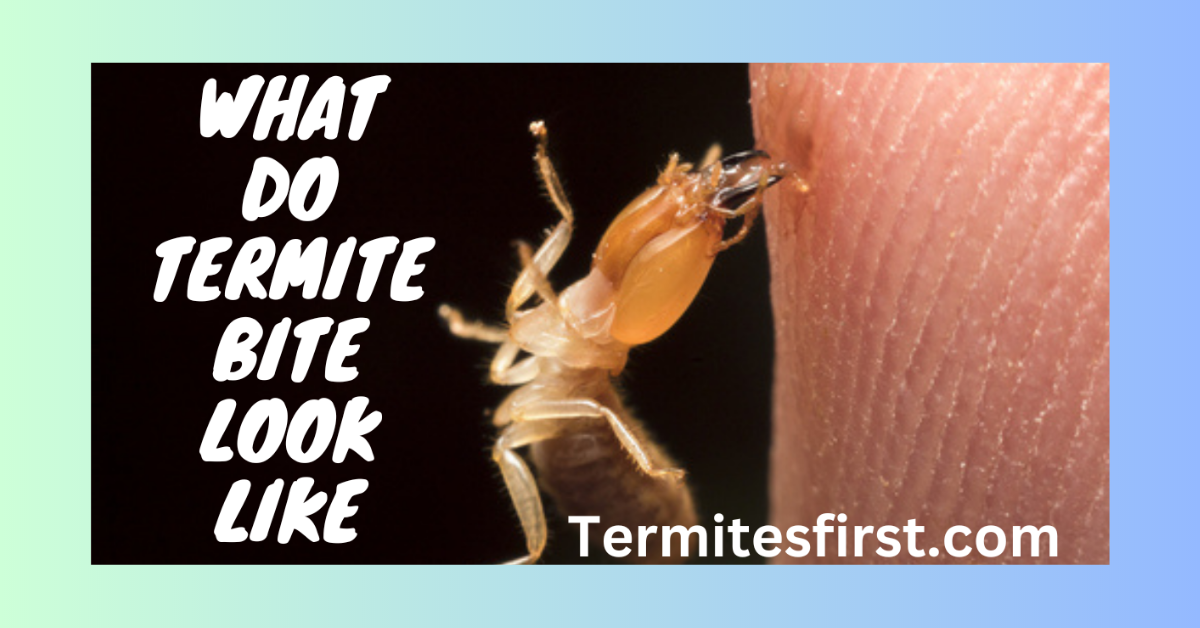
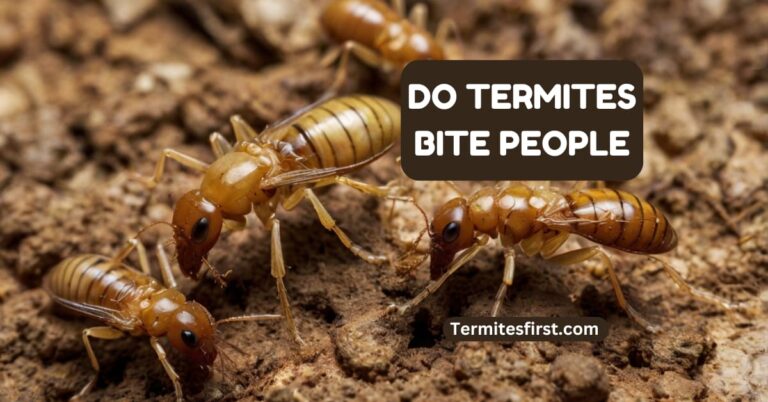
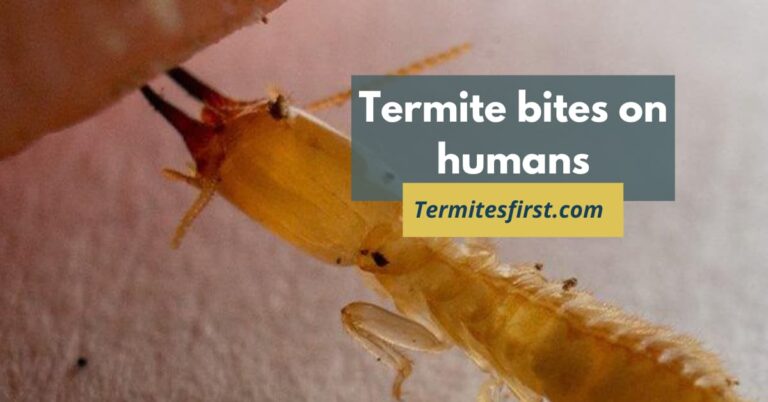
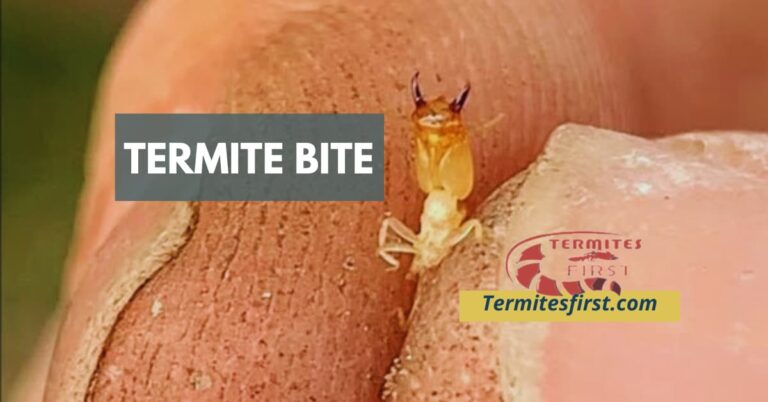
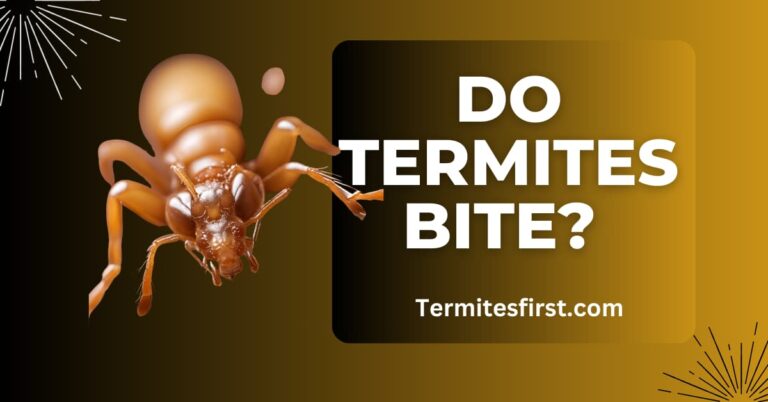
8 Comments